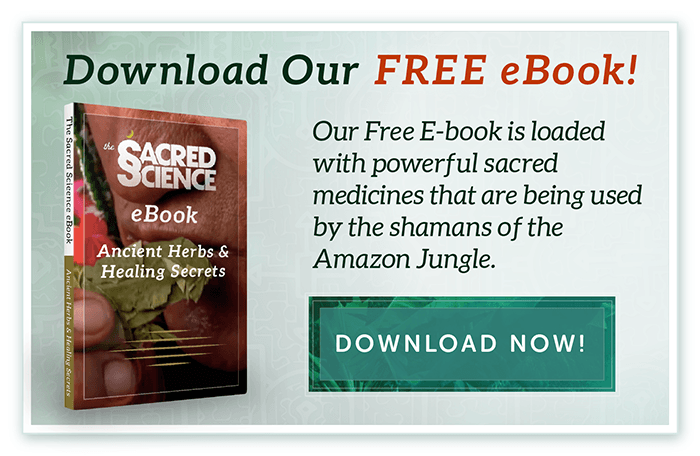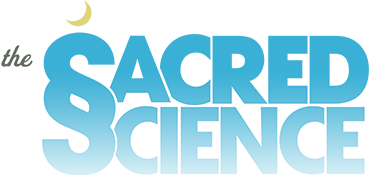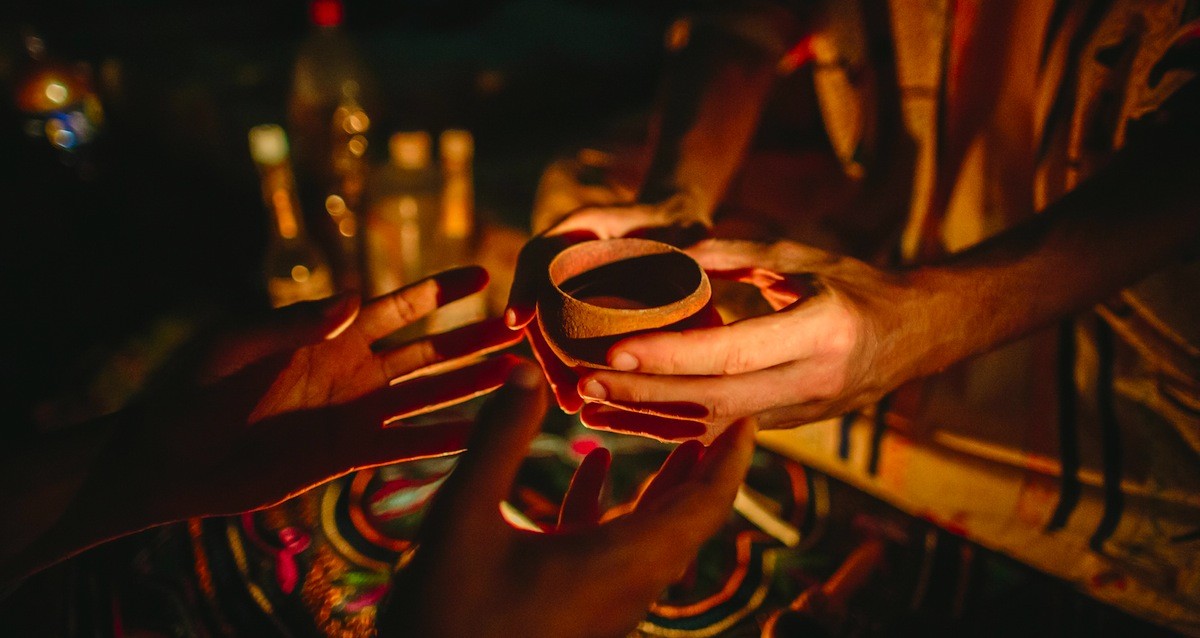Many people today are talking about a sacred and ancient plant remedy from the Amazon rainforest called Ayahuasca. For those of you who are drawn to this medicine and its other-worldly effects, I’d like to give you a heartfelt caution. We Americans and Europeans come from a culture of conquest and convenience, and many of us are blind to this programming. It is woven into the fabric of western life – and can been seen in the way many are approaching their own healing and spiritual evolution.
Unfortunately, I’ve seen this mindset applied to Ayahuasca on many occasions. Folks come down to the jungle in droves, thinking it’s the next big thing, but what many do not realize is that indigenous traditions have worked with this plant medicine for thousands of years, yet never viewed it as a quick fix or thrill ride. On the contrary, the locals have always seen it as a tool to be used with great care only by those healers who have gone through extensive training for many years.
Traditionally, new patients or initiates were painstakingly prepared via a wide array of practices in order to ready themselves for this rite of passage and deepen its effect. More than just a visionary and wild exotic experience to tell your friends about, this plant medicine was part of an intricate spiritual discipline meant to activate the evolutionary healing of the human organism in a sustainable way.
Throughout many generations, the ancestors of these traditions developed blueprints of the human psyche, specifically for events like Ayahuasca ceremonies. During these shamanic journeys, a gateway into the subconscious opens and it takes much experience and wisdom to navigate and guide others through that vast ocean of human psyche. This process has always taken place in a continuous retreat setting, and has never been taken for granted, until now.
The ceremonial experience itself was and is only one part of the healing equation, no matter how powerful or profound. The preparation for the healing experience and integration period afterwards (with guidance from experienced healers and practitioners) has always been viewed as an equally important component. Without it, any positive outcomes from the ceremonies will not last.
Another phenomenon taking place today in the Ayahuasca culture and the spiritual world in general is “holy cow worshiping” syndrome. The fact that someone is from India does not necessarily make them a Yogi or a guru. The same goes for the Amazon.
Being born in the rainforest does not make someone a shaman. This culture has been greatly commercialized and many so-called shamans are cashing in on the Ayahuasca tourism boom. There are a few authentic healers left who do this work as part of their life’s calling, genuinely working to promote their ancient heritage in a way that allows real growth, healing, and development of deep values. This is evidenced by a high degree of ethics, quality of care, and the amount of time dedicated to the people they work with. Not to mention, what they use the resources gained from this work for.
Over the last few years, there have been a growing number of cases where the indigenous, mestizo and other neo-shamanic healers abuse the trust many people so readily give them.
Deciding to partake in these ancient rites of passage is not something to be taken lightly. You are essentially putting your consciousness, physical and psychological well being into another person’s hands.
So what can be done in order to keep from being fooled by a superficial tourist show or even worse, actually physically or morally abused?
In my experience, raising our individual awareness can be a great catalyst to positive change, and the key solution to avoiding unfortunate situations. Aside from Amazonian and Andean shamans, this approach can be applied to any health care or spiritual practitioners who offer services which may involve potentially compromising trust related situations and circumstances.

How to Prepare Yourself:
If this type of work truly inspires you, spend some time researching the different organizations, centers and healers. In addition to sites directly related to them, see what you can find in terms of documentation of their work, live interviews, public talks as well as feedback and testimonials people have left,
If possible, spend time in person with them before deciding on whether to undergo a profound immersion. Either visit them or attend public events and see if any red flags are raised for you. Energetic resonance and personal connection is a big factor here.
Contact the organization in question and ask about their work, both within the community as well as with individuals. What kind of support mechanisms are in place to empower people on their healing path? What is being done to further this work in the world? What can you as a potential future patient or a participant do in order to prepare for the life changing healing process? What are the integration tools that can help you once you have completed the work there?
By being attentive and taking your involvement seriously, you can gather sufficient information about the intention of those involved, and the social impact they have thus far created in the local and international community. You can also develop an energetic resonance with these people and their healing.
Once trust is cultivated, you can further prepare for this healing work via a variety of spiritual, nutritional and theoretical practices suggested by that particular healer or an organization.
The Next Step
If you resonate with what was written here, we welcome you to take this approach with us.
Many blessings,
Roman Hanis



7 Responses
Great article. I spent many sessions with the Church of Santo Daime in Mexico. A few times we had “ayahuasca tourists.” Why did no one tell them that ayahuasca is not a toy? It’s a deeply transformitive process and requires the highest degree of respect. If you are interested, I chronicled my various sessions and their respective teachings in my book Counterpoint to Reality. Before one ventures into the unknown, one needs to become wise––read all you can discuss this with someone who has been there!
This causes me great reflection about the vast numbers of people training in different healing modalities. I am concerned about the integrity of these fast growing numbers of “healers” who see dollar signs after acquiring a tool of two which facilitates healing. I’ve allowed a goodly number of them to “work on me” with varied results and experiences. As a person who feels a calling toward healing, I have been reticent to put it out there not knowing if I truly have the emotional stamina I believe it takes, or should take, to assist others down their unique paths of healing. It really does require a submersion into their emotional energy and the commitment to get in the zone and remain there for the duration. The integrity of the healer to a complete experience for those seeking healing is so vital. I really appreciate this article and the attention to a call for touristic authenticity when practicing the healing arts. Thank you.
Not ‘touristic’…puristic
I have been considering this for a while now. Reading and doing research. I very much appreciate your open honest and advice. Thank you
Thank you for sharing this article. I am very curious and interested in participating in an ayahuasca ceremony. However, I have many concerns, several of which are addressed here. As a westerner, I wonder if this ceremony would be an authentic experience. How could that be possible if this ceremony is typically most powerful within the context of a culture. I adore the culture of the people from South American tribes, but I really know nothing about what it means to be a person of this origin. I often wonder what I am missing out that I am not even aware of. Deep relationships with nature, the people around me, with myself. It is a sad phenomena that western culture is woven from the fabric of quick pleasure, constant stimulation, and disregard to the spiritual realm.
Many thanks for this valuable information & the posts sent, l always find the work published most ponient & timely, l’ve been following you now for a few years & am very grateful for the work you all do in keeping us informed with such varied & interesting topics
Much love & gratitude
Serena